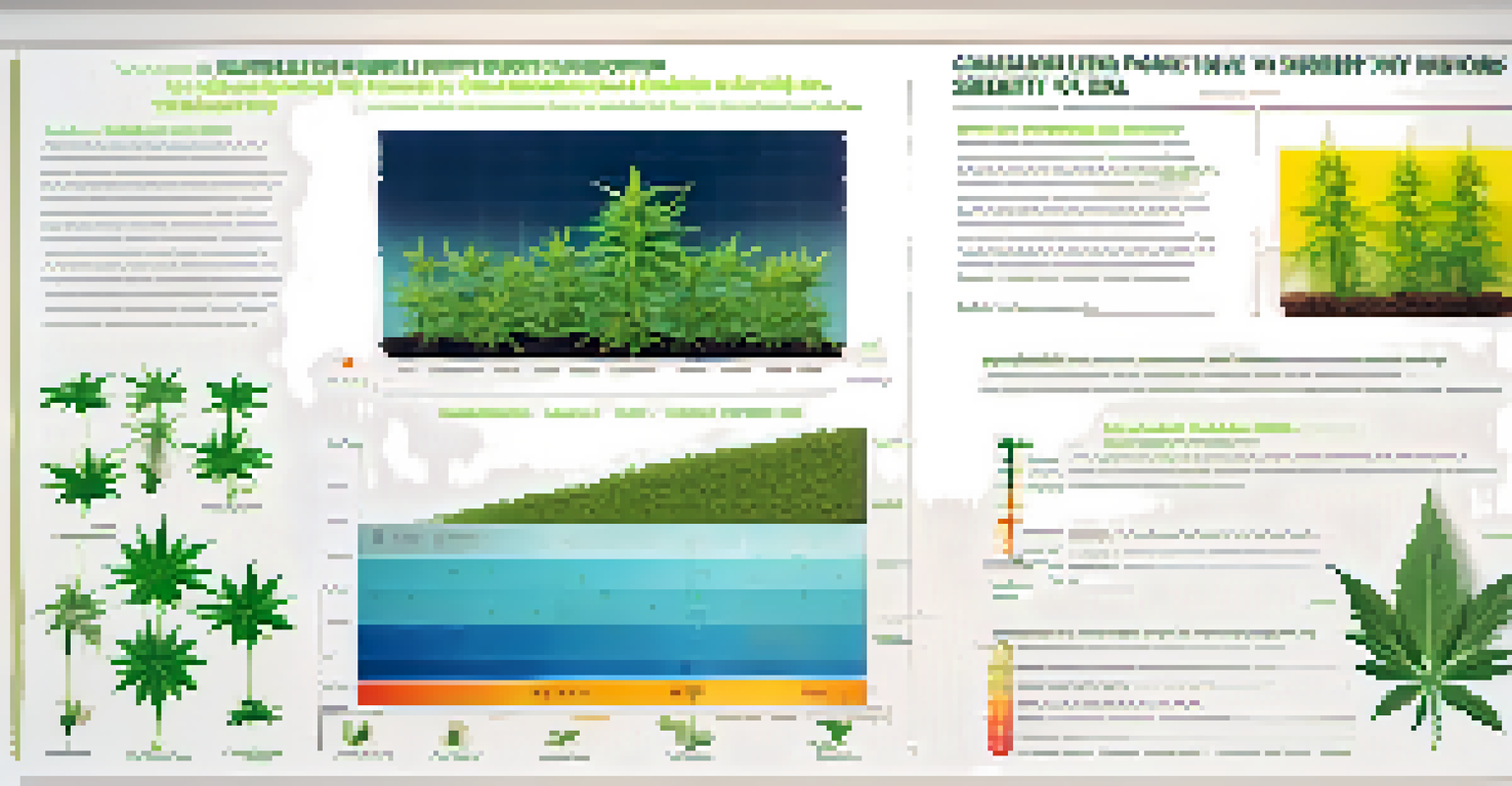Understanding the Role of Humidity in Cannabis Growth

What is Humidity and Why It Matters for Plants
Humidity refers to the amount of moisture in the air, which is crucial for plant health. For cannabis, maintaining optimal humidity levels can significantly influence growth rates and overall yield. Plants, like humans, thrive in comfortable environments, and humidity plays a big part in that comfort.
Plants are like people; they thrive in a comfortable environment.
When humidity is too low, cannabis plants can experience stress, leading to issues like nutrient deficiencies or stunted growth. Conversely, high humidity can create a breeding ground for mold and pests. Finding that sweet spot is essential for cultivating healthy plants.
Understanding humidity allows growers to tailor their environments, whether indoors or outdoors, to meet the specific needs of their cannabis plants. This not only aids in growth but also enhances the quality of the final product.
The Ideal Humidity Levels for Cannabis Growth
Cannabis plants thrive in different humidity levels at various growth stages. During the seedling and vegetative stages, a humidity level of around 60-70% is usually ideal, as it promotes healthy leaf development and root growth. In contrast, flowering plants prefer lower humidity levels, typically around 40-50%, to prevent mold and mildew.

Adjusting humidity levels is crucial as the plant grows; it can be the difference between a bountiful harvest and a disappointing one. For instance, if humidity remains high during flowering, the risk of bud rot increases significantly. Conversely, low humidity during the seedling phase can lead to weak plants.
Humidity is Crucial for Plant Health
Optimal humidity levels significantly influence cannabis growth, yield, and overall plant health.
By monitoring and adjusting humidity, growers can effectively support their plants through each stage of growth, ensuring they develop robustly and yield high-quality buds.
How Humidity Affects Photosynthesis in Cannabis
Humidity plays a vital role in photosynthesis, the process through which plants convert light into energy. When humidity is too low, plants may close their stomata, tiny openings on leaves, to conserve water. While this prevents water loss, it also limits the amount of CO2 entering the plant, which can hinder growth.
The secret to a healthy plant is not just in the soil, but in the air around it.
On the other hand, optimal humidity allows for effective gas exchange, ensuring plants can absorb the CO2 needed for photosynthesis while releasing oxygen. This balance is crucial for healthy growth and maximizing yields.
Therefore, maintaining the right humidity isn’t just about preventing stress; it’s also about ensuring that cannabis plants can photosynthesize efficiently, ultimately leading to stronger, more productive plants.
Humidity and Nutrient Uptake in Cannabis Plants
Humidity levels can also influence how cannabis plants uptake nutrients from the soil. When humidity is high, plants tend to absorb more water, which can lead to increased nutrient uptake. However, if humidity is excessively high, it can create a situation where the roots are overwhelmed and do not absorb nutrients effectively.
Conversely, low humidity can lead to drier soil conditions, making it harder for plants to access essential nutrients. This can result in nutrient lockout, where plants struggle to absorb what they need for healthy growth.
Ideal Humidity Varies by Growth Stage
Cannabis requires different humidity levels during seedling, vegetative, and flowering stages for robust development.
By carefully managing humidity, growers can optimize nutrient availability and uptake, helping plants to thrive and produce high-quality buds.
The Impact of Humidity on Pest and Disease Management
Humidity can significantly influence the prevalence of pests and diseases in cannabis cultivation. High humidity creates a favorable environment for mold and mildew, which can quickly devastate a crop if not managed. For example, powdery mildew thrives in high moisture conditions, often leading to significant losses.
Conversely, low humidity can help deter some pests, but it might also stress the plants, making them more susceptible to other issues. A balanced humidity level can help create an environment that minimizes the risk of both pests and diseases.
By understanding humidity's role in pest and disease management, growers can implement strategies to protect their plants and ensure a healthy harvest.
Techniques for Managing Humidity in Cannabis Cultivation
There are several effective techniques for managing humidity levels in cannabis growing environments. For indoor growers, dehumidifiers and humidifiers can be vital tools for regulating moisture levels. Additionally, proper ventilation is essential to prevent stagnant air, which can lead to mold growth.
For outdoor growers, timing is key; planting during seasons with naturally balanced humidity can yield better results. Utilizing mulch and proper irrigation techniques can also help maintain soil moisture levels and affect overall humidity.
Humidity Affects Photosynthesis
Maintaining the right humidity ensures efficient gas exchange, essential for effective photosynthesis and maximizing yields.
Ultimately, finding the right balance in humidity management can lead to healthier plants and a more successful harvest.
How to Monitor Humidity Levels Effectively
Monitoring humidity levels is crucial for successful cannabis growth. Growers can use hygrometers, which measure humidity, to keep track of moisture levels in their growing environment. Many modern grow tents and indoor setups come equipped with built-in sensors that provide real-time data.
Regularly checking humidity levels allows growers to make necessary adjustments promptly. For instance, if humidity spikes unexpectedly, immediate action can prevent potential mold issues. Likewise, recognizing low humidity early ensures that plants receive the moisture they need.

Incorporating a routine for humidity monitoring into your cultivation practices can greatly enhance the health and productivity of your cannabis plants.